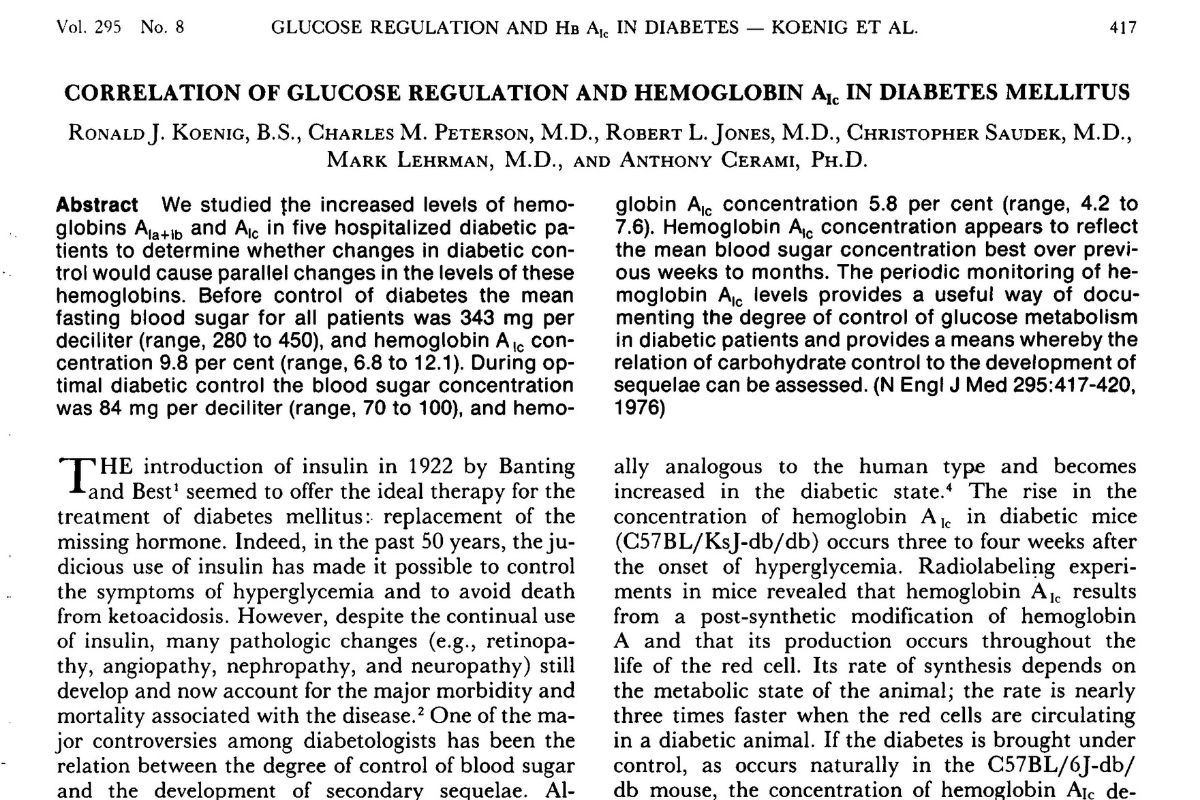
Accurate control of blood sugar for people with type 1 diabetes (T1D) was not easy in the 1970s. At the time, the degree of diabetes control relied on patient history, urinary sugar and blood-sugar measurement at the time of the doctor’s visit. There was nothing that could tell you what your blood-sugar levels were for the past 2 to 3 months.
Enter Anthony Cerami, Ph.D. In 1976, he and his colleagues, knowing that sugar attaches to red blood cells (hemoglobin) in the body, demonstrated that it could be used to determine how well blood sugar had been controlled in the previous 2 or 3 months (because red blood cells have a life span of about 120 days). This discovery led to the creation of the hemoglobin A1c (HbA1c) test. (Although other researchers had already observed elevated HbA1c levels in people with diabetes, Cerami was the first to propose its use for monitoring blood-sugar control.)
Breakthrough T1D funded Dr. Cerami in 1976-1978, to study the role of HbA1c as a monitor of diabetes control. This led to it being used for the Diabetes Control and Complications Trial (DCCT), a comprehensive clinical study from 1983-1993, to find out if intensive insulin control warded off complications from the disease. The conclusion of the trial: people who were able to keep their blood-sugar levels as close to normal as possible, as assessed using HbA1c, had less chance of developing complications, such as eye, kidney, heart and nerve disease.
At the time, many doctors had not put much emphasis on tight control of blood-sugar levels. The common belief for decades was that diligent monitoring of blood sugars and intensive insulin therapy had little consequence for people with diabetes. Since the DCCT’s findings, statistics have proven that tight blood-sugar control can be extremely beneficial for people with diabetes.
Without HbA1c, this would have been nearly impossible to demonstrate.
Explore Anthony Cerami’s website to learn more about his research.